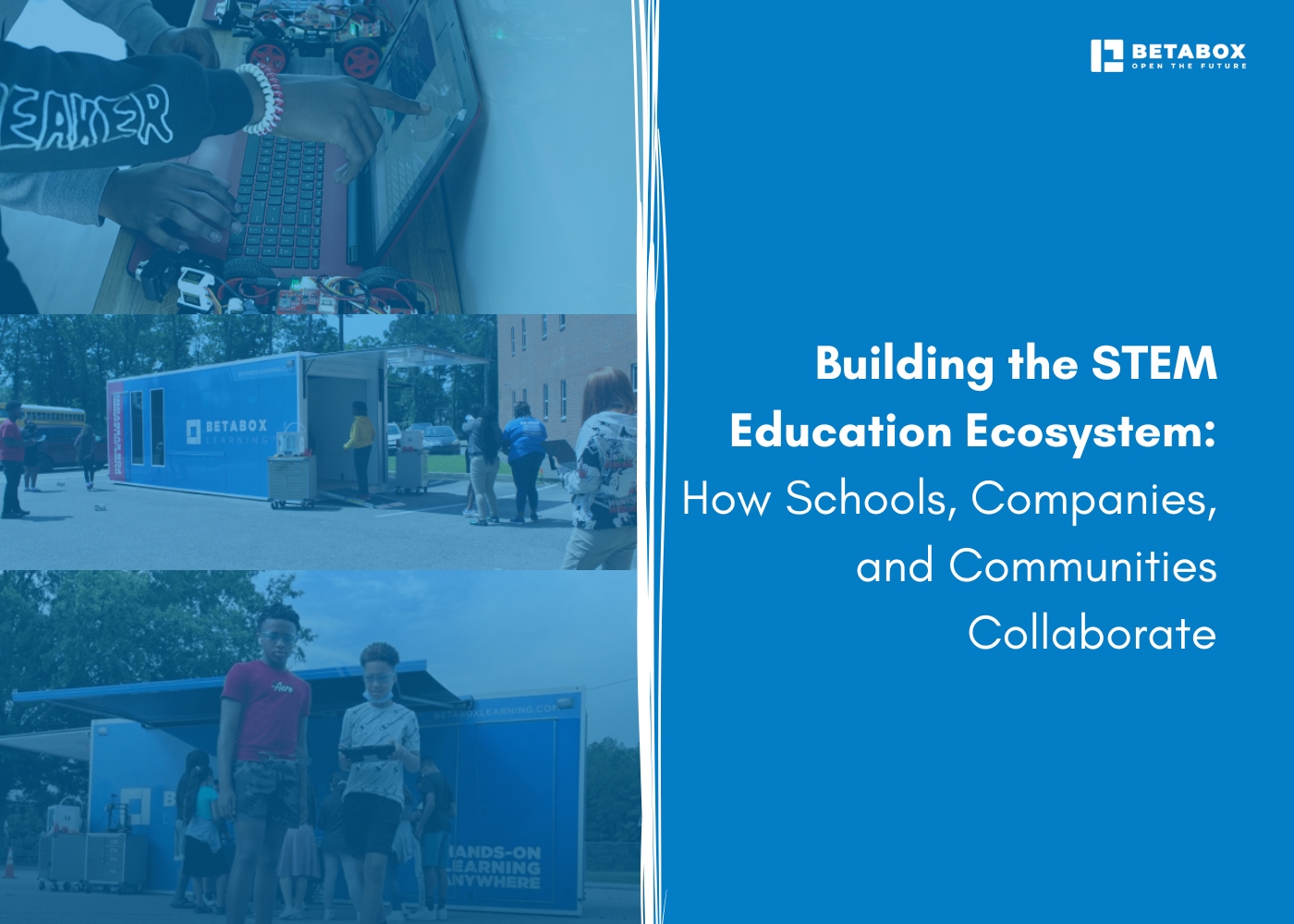
Stakeholders across sectors recognize the need for coordinated efforts in education. A robust STEM education ecosystem integrates schools, businesses, and communities to deliver equitable learning opportunities. This approach addresses persistent gaps in K-12 settings, where rural and low-income students often lack access to advanced resources.
Betabox operates at the heart of this ecosystem. Since 2015, the organization has delivered hands-on experiences to over 500,000 students in more than 1,000 schools across 150 districts.
Programs arrive via mobile labs, eliminating logistical barriers for under-resourced areas. Companies fund these initiatives at no cost to schools, creating a sustainable model that aligns corporate goals with community needs.
Effective ecosystems rely on interconnected components. Schools provide the foundational infrastructure. Businesses contribute expertise and funding. Communities offer local context and support networks. Together, these elements foster K-12 STEM engagement that prepares students for evolving job markets.
Consider the broader context. The U.S. Department of Education's initiatives emphasize inclusive access, yet disparities persist. Betabox bridges this by focusing on southeastern U.S. rural schools, where property tax-based funding exacerbates inequities.
Isolated programs yield short-term gains. Ecosystems ensure continuity, from initial sparks of interest to long-term career pathways. Data from Betabox evaluations show a 25% immediate increase in STEM interest after one-hour sessions, with 50% gains in content knowledge. These outcomes scale when partners collaborate, amplifying impact across regions.
Collaboration transforms theoretical knowledge into practical skills. Partners pool resources to create seamless experiences that extend beyond classroom walls.
Schools anchor the ecosystem by integrating hands-on activities into curricula. Betabox's Onsite Field Trips park directly in school lots, delivering robotics and drone sessions without disrupting schedules. Educators report a 90% Net Promoter Score, citing ease of implementation and student excitement.
District leaders gain from tailored blueprints. These plans outline funding strategies and resource deployment, ensuring alignment with local standards. For instance, partnerships with state departments like North Carolina's Public Instruction have expanded access in underserved counties.
Tech firms, advanced manufacturers, data centers, energy providers, and construction companies invest here for strategic returns. Funding yields 4x to 10x ROI through enhanced employer branding, talent recruitment, and community recognition. Betabox handles operations, from program design to volunteer coordination, minimizing corporate effort.
Google for Education exemplifies this. Their collaboration with Betabox empowered students with AI and robotics exposure, fostering innovators for future tech roles. Similarly, MITRE's partnership delivered cutting-edge field trips to underserved areas, building skills in systems engineering.
Local organizations and governments provide on-the-ground insights. They identify priority schools and co-host events, strengthening ties. Betabox's Impact Network connects these stakeholders, allowing companies to browse unfunded needs and sponsor targeted initiatives.
In rural settings, this model stimulates economic growth. Communities gain a pipeline of skilled graduates, reducing talent shortages in sectors like energy and manufacturing.
Practical experiences ignite curiosity and build confidence. Betabox prioritizes these over rote memorization, aligning with demands for adaptive skills in AI-driven economies.
Students thrive when learning mirrors real-world challenges. Hands-On Projects let participants assemble self-driving cars or program drones, developing problem-solving and teamwork. Evaluations confirm these activities boost STEM identity, particularly among underrepresented groups.
First-year teachers benefit too. Turnkey kits and workshops equip them for high-impact lessons, accelerating success in resource-strapped districts.
Classbox.com serves as a digital hub, offering on-demand supplies and coaching. This platform sustains field trip momentum, embedding hands-on STEM learning into daily instruction. Partners track usage, ensuring funds translate to measurable engagement.
Equity defines successful ecosystems. Pathways must accommodate varied backgrounds, ensuring no student falls behind due to zip code or circumstance.
Rural and low-income schools face infrastructure hurdles. Betabox's mobile model reaches 125+ counties, serving 325,000+ students. Programs emphasize building STEM pathways that include accessibility features, like adaptive tools for disabilities.
Diverse participants report higher confidence post-experience. A Cypress Creek collaboration engaged 125 middle and high schoolers from varied socioeconomic groups, with 50% experiencing hands-on tech for the first time. Over half enrolled in follow-up programs, demonstrating pathway stickiness.
Inclusivity requires intentional design. Betabox incorporates universal principles, such as flexible grouping and culturally relevant challenges. This approach supports English learners and students with disabilities, aligning with federal guidelines.
Companies enhance these efforts by sponsoring inclusive kits. For CSR leads, this builds diverse talent pools, addressing industry-wide retention challenges.
Funding sustains ecosystems. Betabox structures partnerships to match corporate missions with school needs, maximizing efficiency.
Draw from proven frameworks, like outcome-based contracting. Partners fund via the Blueprint platform, selecting initiatives from $5,000 upgrades to $100,000 campaigns. Eighty percent of schools receive programs free, with Betabox managing grants and reporting.
Learn how to fund STEM programs aligned with your company's mission. This guide outlines steps for tech and manufacturing firms to tie investments to ESG goals.
Google's initiative targeted North Carolina schools, blending virtual and onsite elements for broad reach. MITRE focused on engineering simulations, preparing students for defense tech careers.
The University of West Alabama's outreach, backed by a Department of Labor grant, scaled to multiple districts. These cases illustrate STEM school industry partnerships that deliver 4x-10x returns while closing gaps.
Accountability drives growth. Ecosystems succeed when partners quantify progress.
Track STEM interest (25% uplift), knowledge gains (50%), and enrollment boosts. Betabox's reports include student demographics and long-term tracking, supporting ESG disclosures.
Ninety percent educator satisfaction underscores program quality. Partners access dashboards for real-time insights, refining future investments.
Phased implementation works best. Start with field trips, expand to projects and Path Tools for career mapping. This builds capacity, as seen in expansions across 25 states.
Communities scale through networks. Betabox's platform connects funders to needs, enabling multi-year commitments.
Ready to contribute? Begin with a blueprint call to assess needs.
Start onboarding to explore funding matches. Corporate teams collaborate on custom plans, from volunteer events to resource sponsorships.
Schools apply via simple forms; companies review aligned opportunities. This streamlined approach ensures quick wins.
Align with four pillars: personalized hands-on development, competency credentials, nonlinear careers, and public-private procurement. These guide sustainable growth, per Betabox's strategic vision.
Strong community partnerships in STEM create lasting value. Schools gain resources, companies build pipelines, and communities thrive. Betabox facilitates this through evidence-based tools and collaborative models. Invest today to shape an inclusive future where every student accesses technology's promise.
(Word count: 1523)
What is a STEM education ecosystem?
A STEM education ecosystem unites schools, businesses, communities, and governments to deliver coordinated, equitable learning. It integrates hands-on experiences with career pathways, addressing gaps in K-12 access.
How do schools, companies, and communities work together in STEM education?
Schools host programs; companies fund and provide expertise; communities identify needs and co-host events. Betabox coordinates via platforms like the Impact Network for seamless cross-institutional collaboration in STEM.
Why are community partnerships important for STEM learning?
They ensure local relevance and sustainability, closing rural-urban divides. Partnerships boost engagement by 25% and support diverse students, fostering economic growth through skilled workforces.
What does cross-institutional collaboration look like in schools?
It involves joint planning, shared resources, and joint events. For example, Betabox's field trips integrate corporate volunteers with school curricula, yielding 50% knowledge gains in one session.
How can companies support STEM education in schools?
Fund turnkey programs, sponsor kits, or list career paths. Betabox offers 4x-10x ROI via branding and recruitment, with full reporting for mission-aligned STEM funding.
What makes an inclusive STEM pathway for diverse students?
Inclusive pathways feature adaptive tools, cultural relevance, and equity focus. Betabox designs for disabilities and underrepresented groups, ensuring all access hands-on opportunities per federal guidelines.


Ready to learn how Betabox resources can be implemented at your school or District?
Book a Blueprint Call

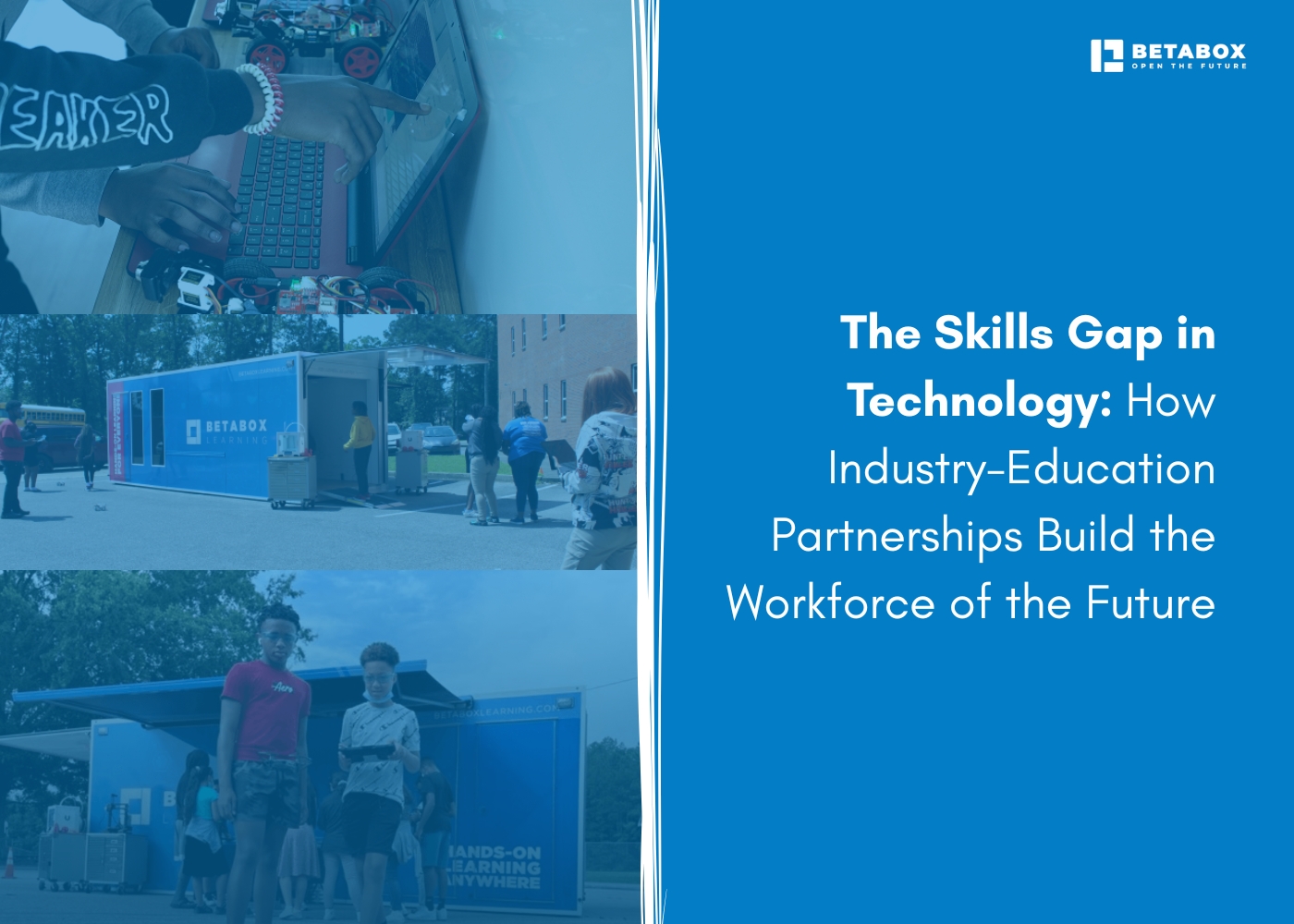

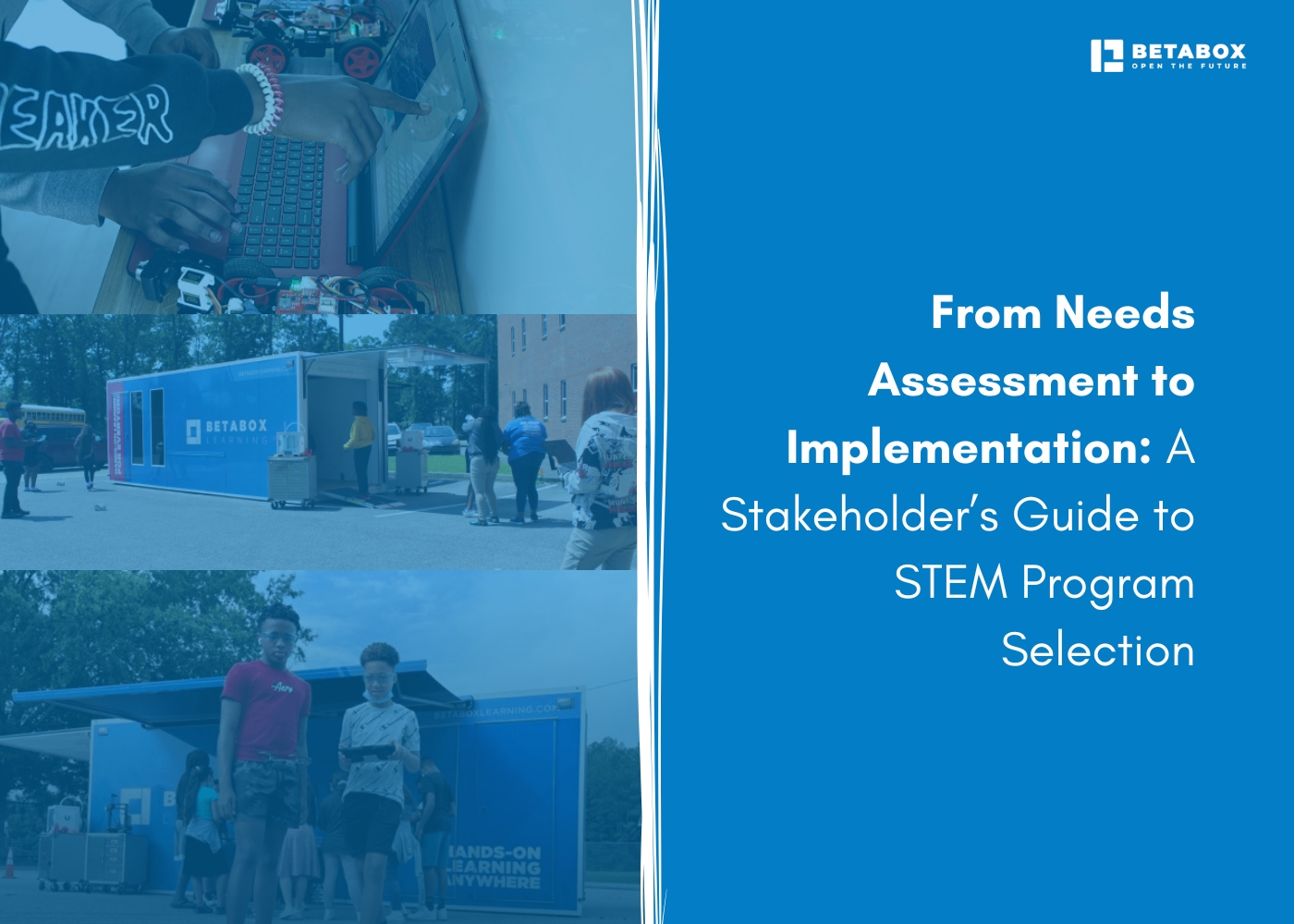



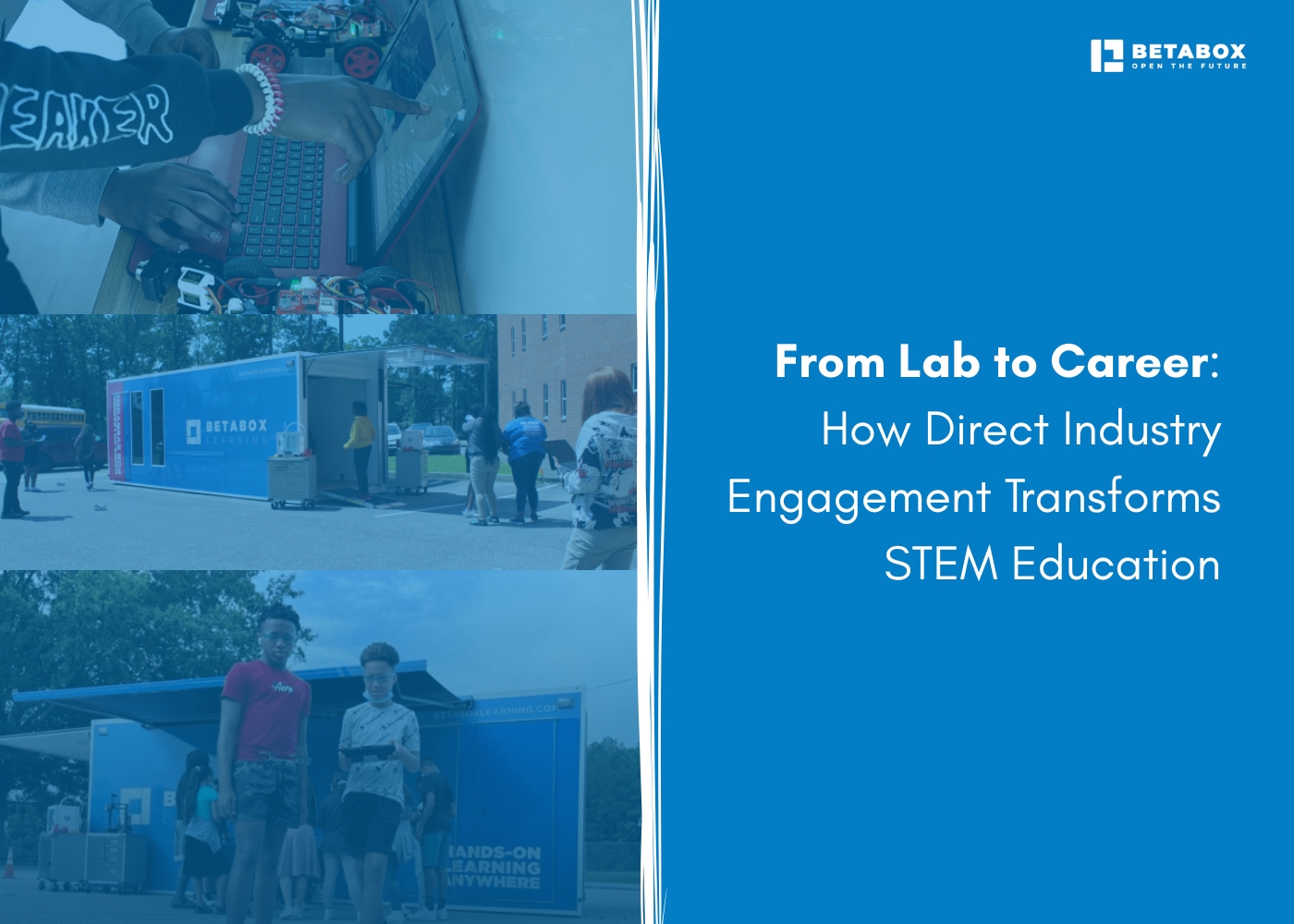

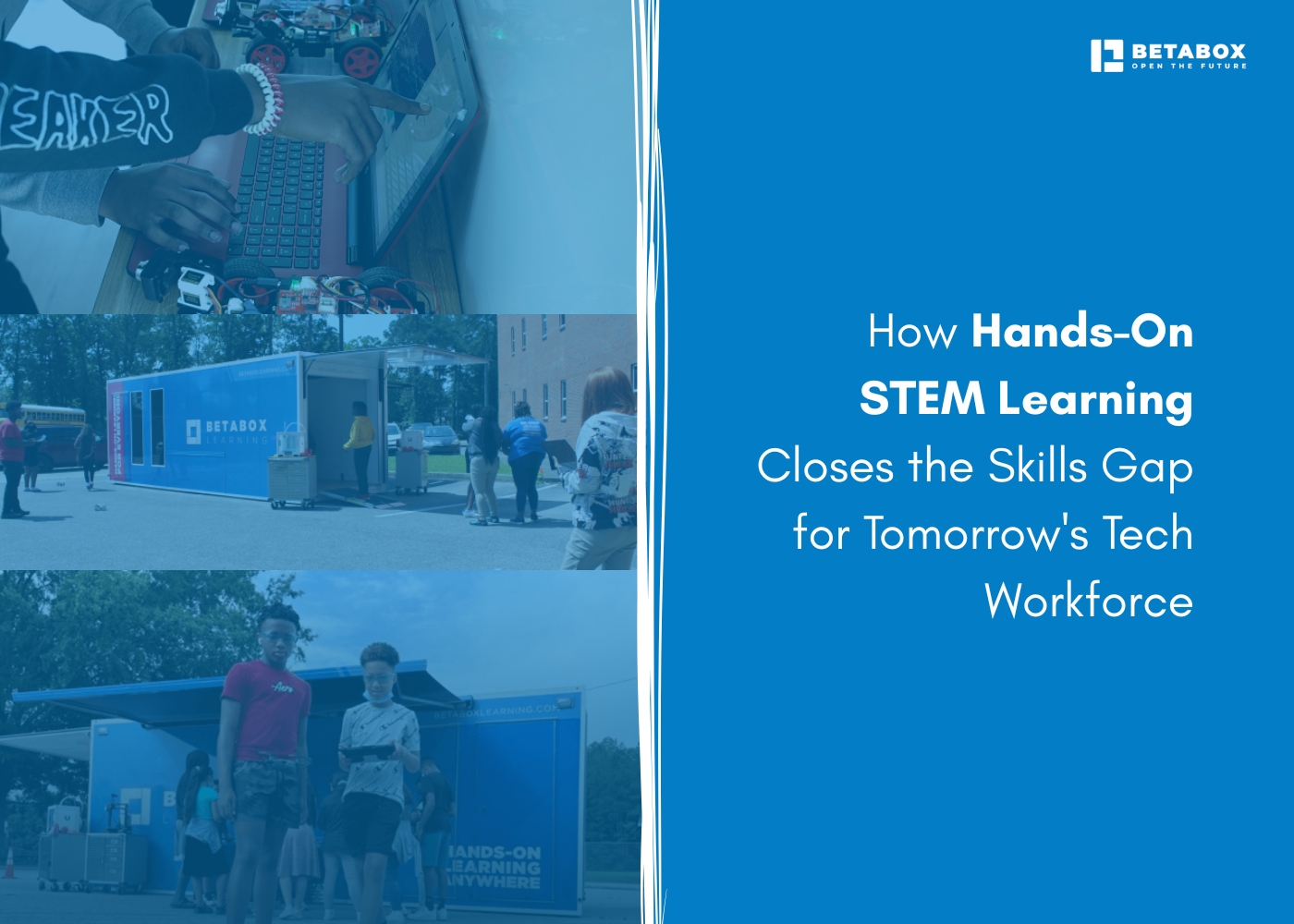



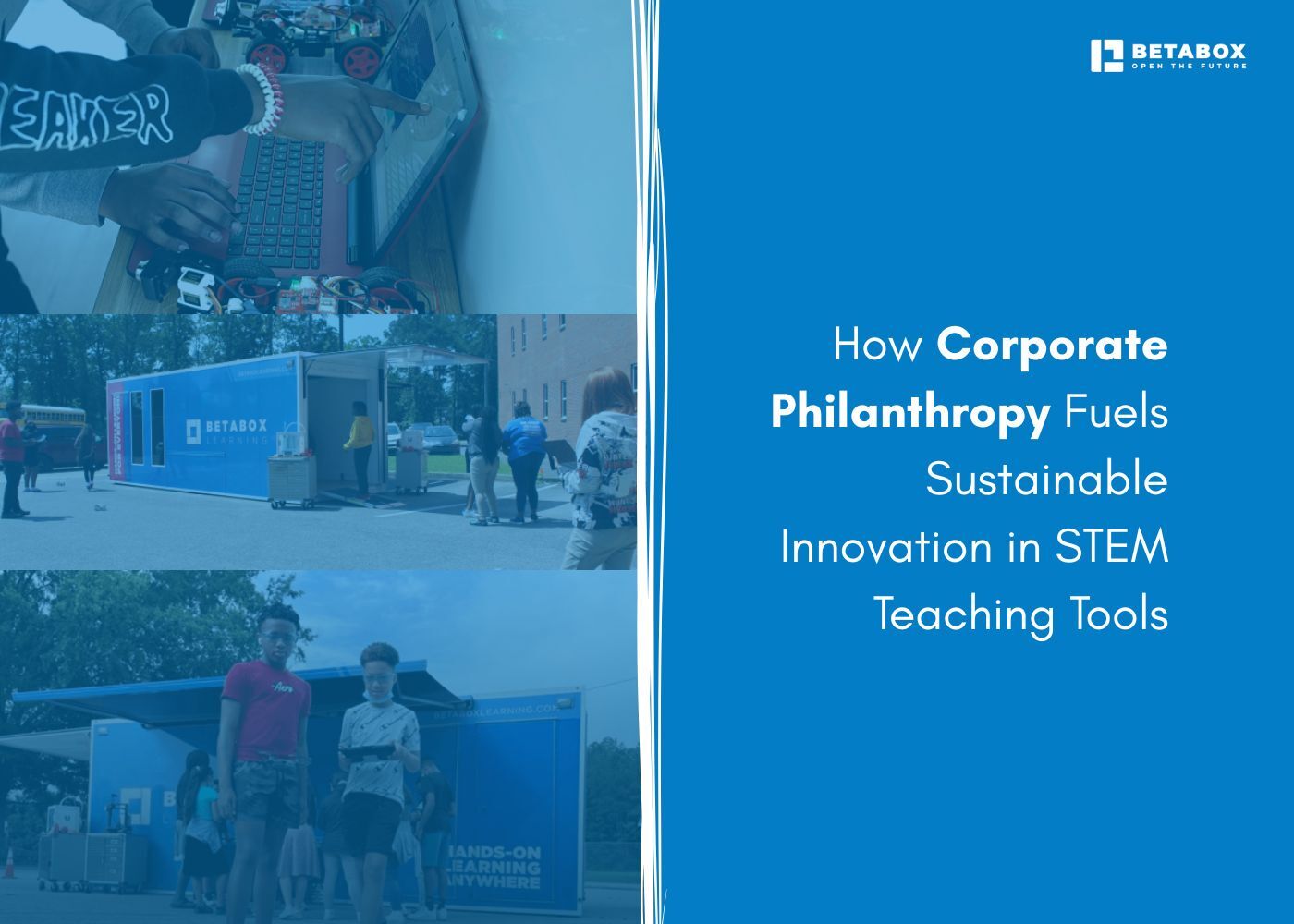

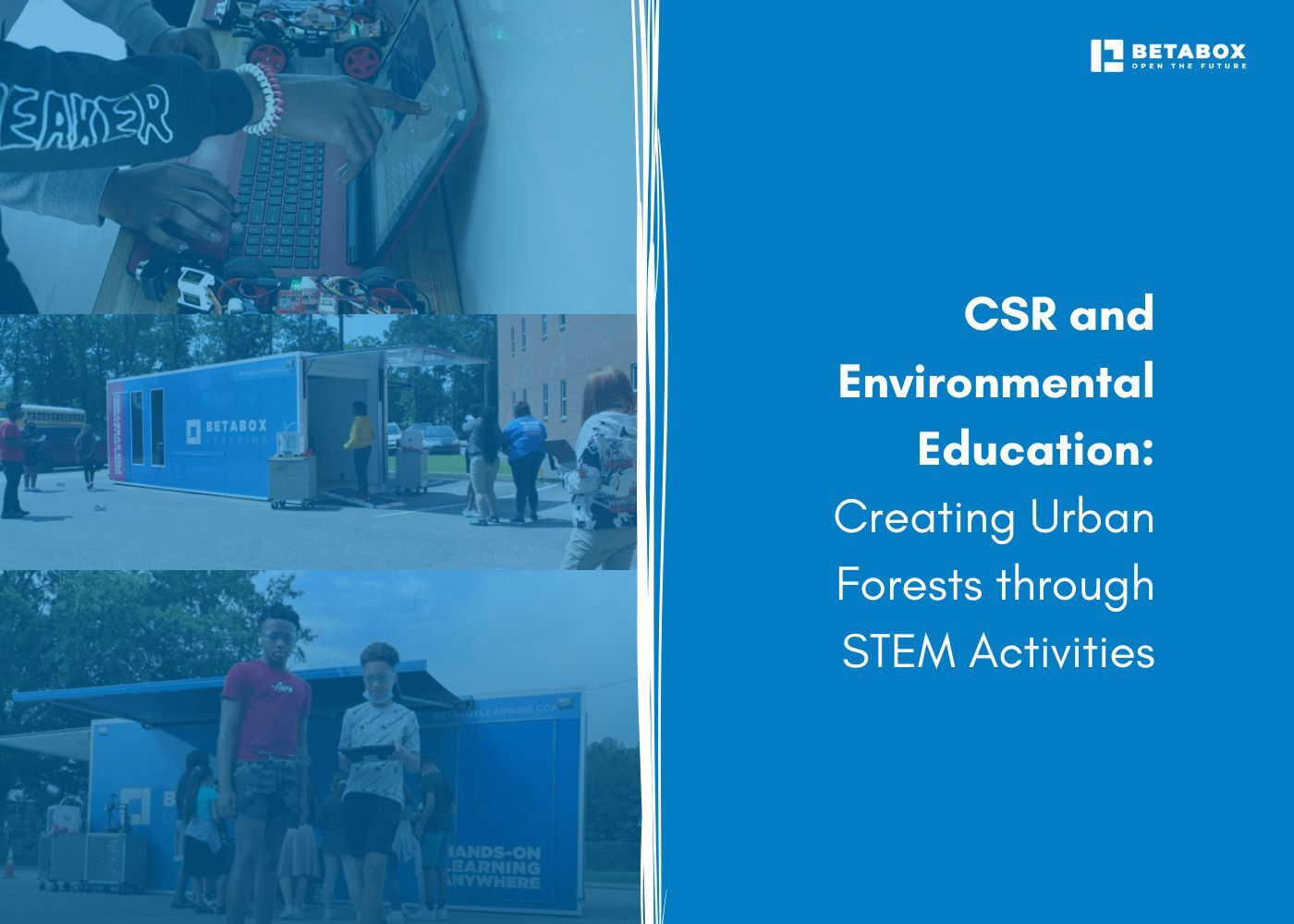



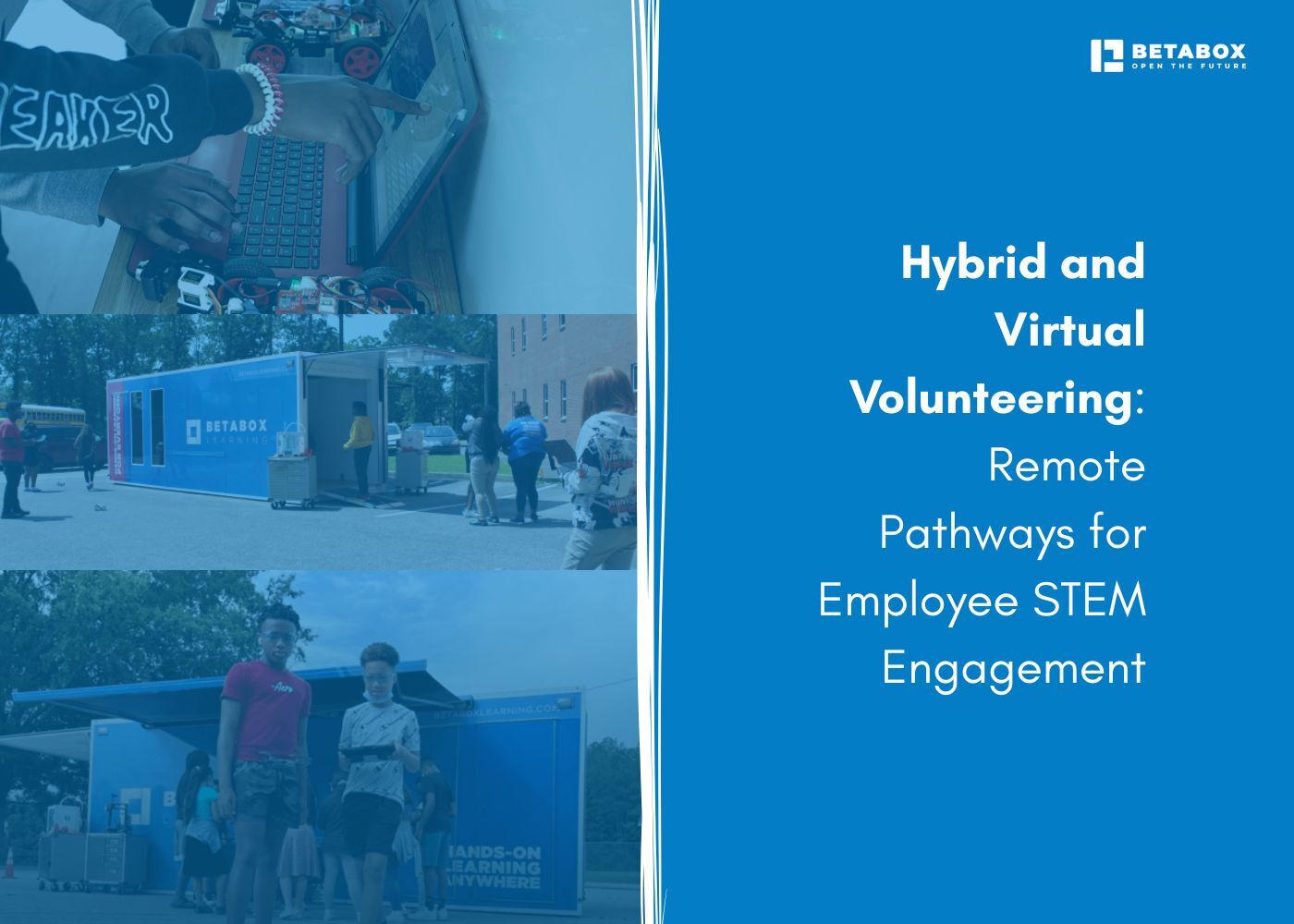





At Betabox Learning, we are passionate about making hands-on STEM curricula accessible to all students.

Join our newsletter to stay in the loop on all things Betabox and the future of STEM education.
By submitting your email address, you agree to our Privacy policy and Terms of Service. You can unsubscribe any time via the link in your email.
© 2025 Betabox. All Rights Reserved
